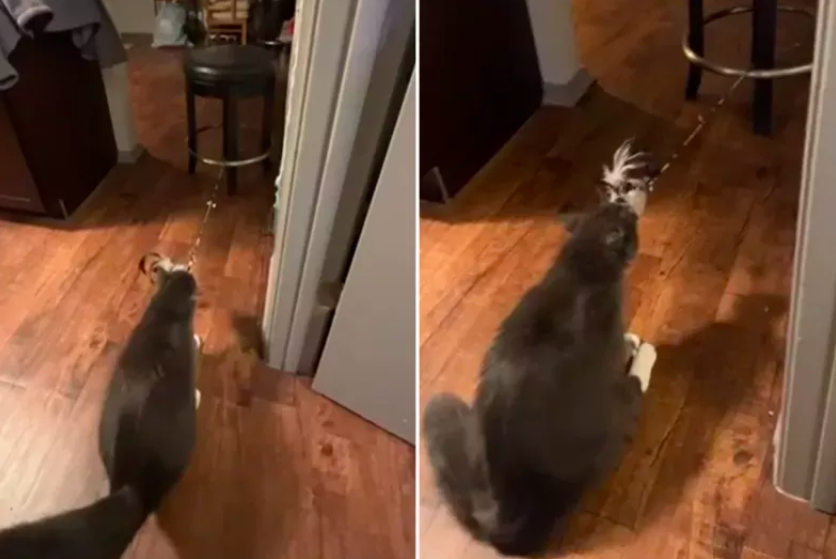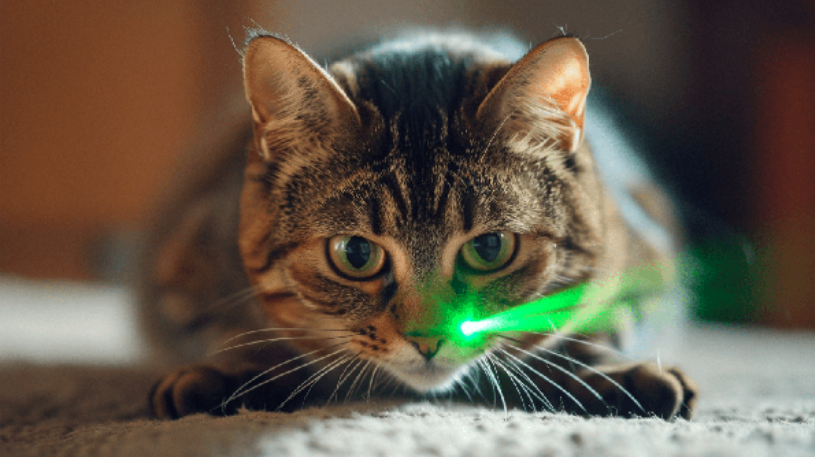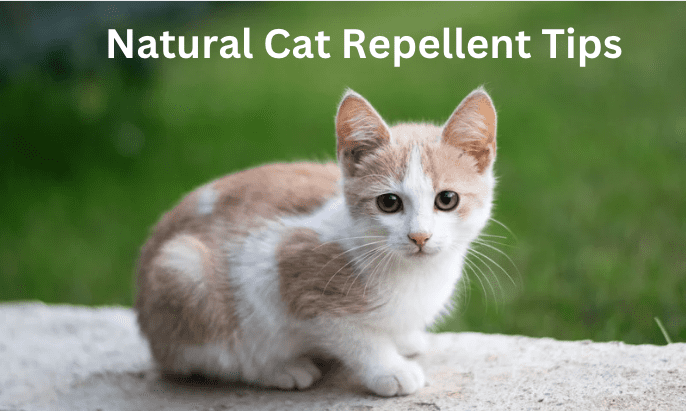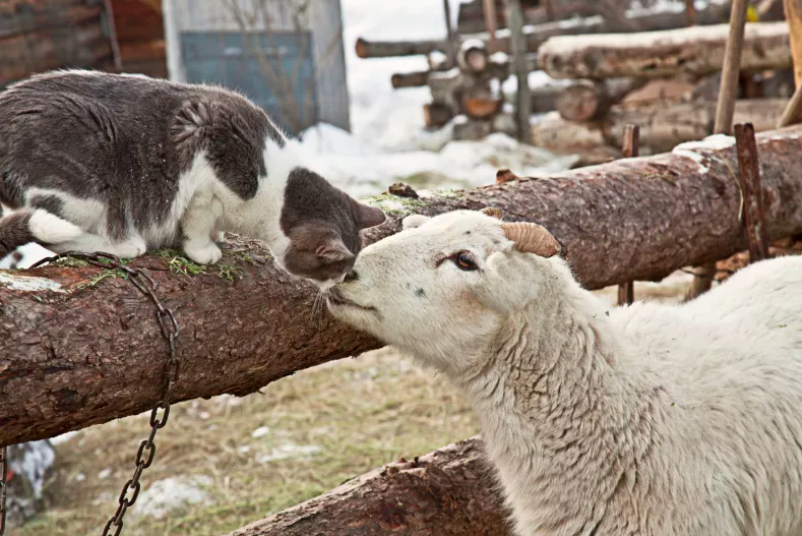Cats
Microchipping Your Cat: The Ultimate Guide to Keeping Tabs on Your Feline Friend

Microchipping Your Cat: The Ultimate Guide to Keeping Tabs on Your Feline Friend
Every cat owner knows that these enigmatic creatures have an uncanny ability to explore, wander, and sometimes disappear into thin air.
As much as we’d love for our feline friends to stay close and safe, their curious nature often leads them astray.
That’s where microchipping comes into play – a modern marvel that ensures your beloved kitty’s safety and brings peace of mind.
In this comprehensive guide, we’re delving deep into the world of microchipping for cats, covering everything from the basics to the benefits, and addressing common questions to put your worries at ease.
What is Microchipping?
A Digital Guardian for Your Feline Friend
Microchipping unveils a modern wonder that bridges the gap between technology and pet care, offering you a fail-safe way to ensure your feline friend’s safety and well-being.
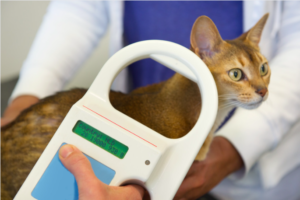
This revolutionary technique introduces a small, yet immensely powerful, solution to a challenge every cat owner faces: the potential of a beloved pet getting lost or separated from their human family.
The Tiny Tech Marvel: Explained
At its heart, microchipping is akin to placing a virtual homing beacon within your cat’s very being.
Think of it as a covert mission, where a minuscule device – about the size of a rice grain – is gently implanted just beneath your cat’s skin, typically between the shoulder blades.
This unobtrusive chip carries a unique identification number, essentially providing your cat with an exclusive, digital ID card.
Beyond the Collar: Unveiling the Advantages
Now, you might wonder how this differs from the traditional collar and tag method of identification. Here’s where microchipping shines.
Unlike collars that can slip off during playful escapades or tags that might get caught in the undergrowth, the microchip remains steadfast and secure, forming an indelible connection between your pet and its identity.
Imagine your cat as a world explorer, a tiny Indiana Jones, equipped with an invisible but ever-present artifact.
Whether they’re sneaking through backyard shrubbery or traversing new terrains, their microchip ensures that they always carry a piece of home with them, wherever their curiosity leads.
The Silent SOS: How Microchipping Aids in Reunions
Now, this is where the magic truly unfolds. When your cat unexpectedly goes on an unplanned adventure and ends up miles away from home, their microchip becomes their voice in the wilderness.
Imagine a microchip as a virtual nameplate, engraved with your contact details, waiting to be discovered.
When a kind soul, a vigilant neighbor, or a dedicated animal rescue volunteer finds your lost furball, they can deploy a handheld scanner, akin to a superhero’s device, over your cat’s microchip.
In an instant, the scanner sparks to life, revealing the secret code that links directly to your information. It’s like waving a magic wand that summons you to your cat’s side, no matter the distance.
A Universal Language of Safety
What makes microchipping truly extraordinary is its global language. This isn’t a technology confined to certain regions or exclusive clubs; it’s a universal badge of security.
So, even if you and your feline companion decide to embark on a cross-country road trip or an international escapade, the microchip’s potency remains undiminished, recognized by caring hearts around the world.
In essence, microchipping is a tale of guardianship, a fusion of love and technology that speaks to a pet owner’s desire to provide their furry family member with the best possible care.
It’s an invisible bond, a whisper of assurance that, even in the vast tapestry of life’s adventures, your cat’s story remains woven into your own.
How Does Microchipping Work?
Unveiling the Inner Workings of a Tiny Guardian
Microchipping may sound like magic, but in reality, it’s a clever application of technology that blends seamlessly with your cat’s everyday life.
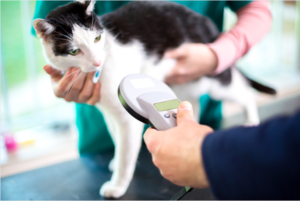
Let’s dive into the intricate mechanics behind this modern marvel and understand how it all comes together to safeguard your feline friend.
The Microchip: A Gateway to Identity
At the heart of microchipping lies the tiny hero itself: the microchip. This diminutive device is essentially a microcomputer, encased in a biocompatible glass casing.
It holds one critical piece of information – a unique identification number. This number is your cat’s digital signature, a code that’s exclusive to them and them alone.
The Scanner’s Dance: A Connection Formed
Imagine your cat as a character in a grand tale, and the microchip as their enchanted amulet. But what happens when our furry protagonist gets lost in the vast world?
Here’s where the scanner enters the scene. When a helpful soul, a veterinarian, or an animal shelter worker comes across a lost cat, they wield a handheld scanner like a mystical wand.
The scanner emits a low-frequency radio signal that awakens the microchip from its slumber. In response, the microchip emits a unique radio frequency signal of its own, carrying the precious identification number.
It’s a dance of signals, a secret conversation only understood by those in the know.
The Universal Database: The Nexus of Reunions
As the scanner captures the microchip’s signal, it’s like discovering a treasure map that leads to you – the cat’s dedicated guardian.
This captured code isn’t just a string of numbers; it’s a link to a massive, centralized database maintained by microchip manufacturers.
This database holds a symphony of details – your contact information, your cat’s name, and any additional notes you’ve provided.
So, when the helpful individual scans your cat’s microchip, they gain access to a portal that reveals your cat’s story and the path back to their loving home.
A Reunion Beyond Boundaries
Here’s the remarkable part: microchipping transcends borders. It’s a universal language spoken by compassionate pet lovers worldwide.
Whether you’re traveling with your cat through bustling cities or remote countryside, the microchip’s magic remains steadfast, recognized by scanners spanning countries and continents.
In essence, microchipping orchestrates a symphony of connections. It’s a harmonious blend of technology, communication, and love, ensuring that, even when your cat wanders far from your embrace, the threads of their story remain unbroken, ready to lead them back to your side.
The Benefits of Microchipping Your Cat
Unlocking a World of Protection and Peace of Mind
Microchipping isn’t just a technological marvel; it’s a gateway to a plethora of advantages that resonate deeply with every responsible pet owner.
From bolstering your cat’s safety to streamlining the process of reuniting lost pets, let’s explore the myriad benefits that come with embracing this cutting-edge solution.
- Increased Chances of Reunion: Imagine this scenario: your cat’s curiosity leads them beyond your backyard, and they find themselves in unfamiliar territory. With a microchip in place, the odds of a heartwarming reunion skyrocket. Should a kind soul or a vigilant animal shelter scan your lost cat’s microchip, they’ll instantly be armed with the key to unlocking your contact details, bringing your feline friend back to your embrace.
- Permanent Identification: Collars and tags, while valuable, can be lost or removed. Microchips, however, nestle securely beneath your cat’s skin, a steadfast identifier that can’t be misplaced. It’s a permanent assurance that, even if external markers vanish, your cat’s connection to you remains intact.
- Quick and Painless Procedure: Worried about putting your cat through a cumbersome procedure? Fear not! The microchipping process is swift and nearly painless. A trained professional inserts the microchip using a needle, much like a routine vaccine shot. Your cat might feel a momentary pinch, but the process is over before they even realize it began.
- Universal Safety Net: Microchips don’t discriminate based on geography. Whether you and your feline explorer embark on local jaunts or globe-trotting adventures, the microchip’s effectiveness knows no borders. It’s a reassuring constant amidst the dynamic backdrop of your cat’s escapades.
- Enhanced Peace of Mind: Picture this: you’re traveling for work or enjoying a vacation, and your cat is safely ensconced in the care of a trusted friend or pet sitter. The microchip becomes your silent assurance, a way for anyone caring for your cat to provide prompt assistance should they venture too far from home.
- Say No to Collar Worries: While collars can pose risks, especially for cats that love squeezing through tight spaces, microchips alleviate these concerns. Your cat can roam freely without the risk of their identification getting snagged or caught.
- A Lifelong Investment: Once your cat is microchipped, you’re essentially providing them with a lifelong safety net. Unlike collars that need replacing or updating, the microchip requires no ongoing maintenance. It’s a one-time investment in your cat’s well-being.
- Peaceful Resolution of Ownership Disputes: Imagine a situation where two families claim the same found cat as their own. Microchips provide an objective solution to ownership disputes, ensuring your beloved feline is returned to the rightful guardian.
- Pet-Napping Prevention: In a world where pet theft isn’t unheard of, microchipping offers a deterrent. Thieves are less likely to target a cat with a microchip, as they know it can lead to quick identification and reunion with their rightful owner.
- Part of Responsible Pet Ownership: Microchipping embodies the essence of responsible pet ownership. It’s a step toward ensuring your cat’s safety and well-being, a commitment that echoes the bond you share with your furry companion.
In essence, microchipping is more than a tagline; it’s an investment in the tangible safety and emotional comfort of both you and your feline friend.
It’s a bridge between the physical and the digital, a conduit through which your love for your pet is transformed into an unbreakable connection.
When Should You Microchip Your Cat?
Timing is Key: Navigating the Optimal Moment
Microchipping your cat isn’t just a matter of convenience; it’s a strategic decision that can impact their safety and your peace of mind.
While you can microchip your feline companion at any stage of their life, there are optimal times to consider, ensuring a seamless integration of this safeguard into their journey.
Kittenhood: A Window of Opportunity
Embracing microchipping during your kitten’s early stages offers a host of advantages. When your adorable furball is receiving their vaccinations or undergoing spaying or neutering, it’s a prime opportunity to introduce the microchip.
This two-in-one approach minimizes stress for your pet and reduces the number of necessary trips to the veterinarian.
Pre-Adoption Considerations
If you’re adopting a cat, inquire about its microchipping status. Many reputable shelters and breeders microchip their cats before they even go to their forever homes.
This means you might welcome your new feline friend with a microchip already in place, streamlining the process and giving you one less thing to worry about during the transition period.
Adult Cats: Never Too Late
For adult cats who haven’t been microchipped, fear not – it’s never too late to introduce this protective measure. Perhaps your cat has joined your family as a rescue or as a stray who’s now found their forever home.
No matter their history, microchipping offers a timeless advantage, regardless of age or past experiences.
Indoor Cats: Unexpected Escapes
Even if you consider your cat an indoor dweller, don’t underestimate their knack for escapades. Accidents happen, doors get left ajar, and windows are occasionally left open.
Microchipping your indoor cat ensures they’re protected in case curiosity takes them beyond the threshold.
Outdoor Explorers: Prioritizing Protection
For outdoor-loving cats who relish in the thrill of exploring the world beyond four walls, microchipping is non-negotiable.
The great outdoors comes with its fair share of unforeseen circumstances, and having a microchip ensures that, should your outdoor adventurer venture too far, they’ll always have a ticket back home.
Travel Plans: A Necessity
If you’re planning travel – be it a local road trip or an international adventure – microchipping becomes a travel essential.
Many countries require pets to be microchipped for entry, making it a seamless process to ensure you’re complying with travel regulations while keeping your cat safe.
In essence, there’s no “one size fits all” answer to the question of when to microchip your cat. Instead, consider your cat’s age, lifestyle, and unique circumstances.
Whether you’re welcoming a new kitten, adopting an adult cat, or ensuring the safety of your outdoor explorer, microchipping remains a timeless gesture of love and protection that transcends ages and stages.
The Microchipping Procedure
A Painless Path to Lifelong Security
You’ve decided to take the leap and ensure your cat’s safety through microchipping – a choice that promises peace of mind and a world of security.
But what exactly does the microchipping procedure entail? Let’s embark on a journey through this straightforward process, dispelling any concerns and shedding light on the steps involved.
Preparing for the Procedure
Before the microchipping procedure begins, it’s wise to have a conversation with your veterinarian or a trained professional. They can address any questions or concerns you might have, ensuring you’re fully informed before proceeding.
The Microchip: A Grain of Hope
The microchip itself is a tiny marvel, encapsulating cutting-edge technology within a biocompatible glass casing.
It’s designed to be safe and compatible with your cat’s body, minimizing the risk of adverse reactions. This minuscule chip carries a unique identification number that’s your cat’s passport to safety.
The Injection: Swift and Precise
The actual microchipping process is swift and nearly painless. A veterinarian or a trained professional injects the microchip just beneath your cat’s skin, typically between their shoulder blades.
It’s a process akin to administering a vaccine or a routine injection, ensuring minimal discomfort for your feline friend.
Reaction and Recovery
After the microchip is injected, your cat might experience a brief moment of surprise or discomfort, similar to how they might react to any other injection. However, the sensation is short-lived, and most cats quickly return to their normal behavior.
No Anesthesia Needed
One of the notable advantages of microchipping is that it doesn’t require anesthesia. Your cat remains awake throughout the procedure, and the discomfort is generally minimal.
This means you can have peace of mind knowing your cat isn’t subjected to unnecessary sedation.
Post-Procedure Care
After the microchipping procedure, there’s no need for special post-operative care. However, it’s recommended to monitor the injection site for a few days.
It’s normal for the area to be slightly red or swollen, but if you notice any unusual changes or if your cat seems unusually uncomfortable, consult your veterinarian.
Registration: Sealing the Deal
Following the microchipping procedure, it’s essential to register your cat’s microchip in a reputable pet recovery database. This database acts as the bridge between your cat’s identification number and your contact details.
Without registration, the microchip remains dormant, so ensure you complete this crucial step to make the microchip effective.
A Lifelong Investment
The beauty of the microchipping procedure lies in its longevity. Once implanted, the microchip requires no further maintenance or replacement. It’s a one-time investment in your cat’s well-being, offering a lifetime of security and reassurance.
Reaping the Rewards
As the microchipping procedure concludes, you’ve not only fortified your cat’s safety net but also made a meaningful contribution to the world of responsible pet ownership.
Your cat is now equipped with a digital guardian angel, ready to ensure their safe return should they ever wander too far from home.
In essence, the microchipping procedure is a testament to the harmonious fusion of technology and compassion.
It’s a demonstration of your commitment to your feline friend’s well-being, a gesture that echoes through time, ensuring that your cat’s journey is one paved with security and love.
Post-Microchipping Care for Your Cat
Nurturing Your Cat’s Comfort and Well-Being
Congratulations, you’ve taken a significant step towards enhancing your cat’s safety and security through microchipping! As your feline friend’s dedicated guardian, it’s essential to provide them with the care they need post-procedure.
Let’s delve into the world of post-microchipping care, ensuring your cat’s journey to a secure future is as smooth as possible.
Monitor the Injection Site
After the microchipping procedure, it’s normal for the area around the injection site to appear slightly red or swollen. This is a natural response to the minor intrusion.
Keep a watchful eye on this area for a few days, ensuring that it gradually returns to its normal state.
Minimal Discomfort
Your cat might experience a bit of tenderness or discomfort around the injection site for a short period. This sensation is temporary and usually subsides within a day or two.
You might notice your cat paying a little extra attention to the area, but as the days pass, their behavior should return to normal.
Preventing Irritation
To avoid any potential irritation or infection around the injection site, discourage your cat from scratching or licking the area excessively.
You can achieve this by providing engaging toys, keeping them entertained, and ensuring their environment is enriched with activities.
Watch for Unusual Signs
While some redness and mild swelling are common after microchipping, keep an eye out for any unusual or concerning changes. If you notice excessive swelling, discharge, or if your cat appears to be in pain, consult your veterinarian for guidance.
Keep Your Cat Indoors
For a short period following the microchipping procedure, it’s wise to keep your cat indoors. This minimizes the risk of them aggravating the injection site while it heals. Indoor confinement for a few days ensures a smoother recovery.
Business as Usual
Beyond these considerations, continue providing your cat with their usual routine and care. Microchipping is a relatively minor procedure that won’t disrupt their daily life.
Whether it’s playtime, mealtime, or those cherished cuddles, maintain your usual interactions to help them feel secure and loved.
Registration and Updating Information
While not strictly post-procedure care, it’s crucial to emphasize the importance of registering your cat’s microchip in a reputable pet recovery database.
Additionally, if any of your contact details change – whether it’s your phone number, address, or email – remember to update this information in the database. This ensures that, should your cat ever need to be reunited with you, the process is seamless.
Returning to Normal
As the days pass, your cat’s comfort will likely return to its pre-procedure state. They’ll adjust to the microchip’s presence, much like they would with any other minor change.
The microchip’s unobtrusive nature means that once healed, your cat will likely forget it’s even there.
Reaping the Rewards
The post-microchipping care phase is a continuation of your commitment to your cat’s well-being.
With your watchful eye and loving care, your feline friend will transition smoothly from the procedure to their everyday life, all while carrying their unique digital identification with them.
In essence, post-microchipping care is a testament to the bond between you and your cat.
It’s a reflection of your dedication, ensuring that their journey – marked by the digital signature beneath their skin – is a harmonious one, guided by comfort, care, and an unbreakable connection.
Microchipping Myths: Debunked
Unraveling the Truth Behind the Buzz
Microchipping has earned its place as a powerful tool in the realm of pet safety, but like any innovative solution, it’s accompanied by its fair share of myths and misconceptions.
Let’s shine a light on these myths and unravel the truth, ensuring you’re armed with accurate information as you consider the best options for your beloved cat.
- Myth 1: Microchipping is Invasive and Painful: Fact: While the concept of implanting a microchip might sound daunting, the reality is far less intimidating. The procedure is minimally invasive, similar to receiving a routine vaccination. It involves a quick injection under your cat’s skin, causing minimal discomfort that’s comparable to any other minor medical procedure.
- Myth 2: Microchips are GPS Trackers” Fact: Microchips are often mistaken for GPS trackers that provide real-time location data. However, microchips don’t possess GPS capabilities. Instead, they serve as a form of identification, providing a link between your cat and their contact information in case they’re found.
- Myth 3: Microchips Cause Health Issues: Fact: Microchips are designed with your cat’s well-being in mind. They’re made from biocompatible materials that are safe for animals. Adverse reactions are rare, and the benefits of microchipping far outweigh any minimal risks.
- Myth 4: Microchips Can be Tracked Remotely: Fact: Microchips don’t emit signals that can be tracked remotely. Instead, they remain dormant until they’re scanned by a handheld device held in close proximity. It’s a passive process that requires a physical connection between the scanner and the microchip.
- Myth 5: Microchipping is Only for Outdoor Cats: Fact: Microchipping isn’t limited to outdoor cats or adventurous explorers. Even indoor cats can benefit from microchipping, as accidents happen, doors can be left open, and curious cats might find themselves outside unexpectedly.
- Myth 6: Microchips Need Frequent Replacement: Fact: Microchips are designed to last a lifetime. Once implanted, there’s no need for regular maintenance or replacement. The microchip remains in place, acting as a constant identifier for your cat.
- Myth 7: Microchipping is Expensive: Fact: The cost of microchipping is generally reasonable and often a one-time expense. When compared to the long-term benefits of ensuring your cat’s safety and swift identification in case they get lost, the cost becomes a small investment in their well-being.
- Myth 8: Microchips Can Be Hacked: Fact: Microchips are passive devices that emit no signals unless scanned by a compatible reader. They can’t be hacked or remotely manipulated. The information they carry is securely stored within the microchip’s internal memory.
- Myth 9: Microchips Can Cause Cancer: Fact: Research has shown no conclusive evidence linking microchips to cancer in pets. The materials used in microchips are generally considered safe and well-tolerated by animals.
- Myth 10: Microchips Can Be Traced Online: Fact: While microchips carry a unique identification number, this number is linked to a centralized database that holds your contact information. Microchips themselves can’t be traced online, and any information retrieved requires a scanner and access to the appropriate database.
In essence, separating microchipping fact from fiction empowers you to make informed decisions for your cat’s safety.
By debunking these myths, we navigate the world of pet care with clarity and confidence, ensuring our feline companions receive the protection they deserve.
Traveling with a Microchipped Cat
A Voyage of Security and Exploration
Traveling with your feline companion is a grand adventure, filled with new sights, sounds, and experiences.
Whether you’re embarking on a road trip, jet-setting to a distant land, or simply visiting family, having a microchipped cat adds an extra layer of assurance to your journey.
Let’s explore the world of travel with a microchipped cat, ensuring that your wanderlust is accompanied by peace of mind.
Check Travel Regulations
Before setting out on your journey, it’s vital to research the travel regulations of your destination. Many countries require microchipping for entry, ensuring that pets are identified and accounted for.
Ensuring your cat’s microchip is registered and up-to-date in a reputable pet recovery database is crucial for a smooth travel experience.
Travel-Friendly Identification
While collars and tags are important, they can get lost or snagged during travel. A microchip, however, remains securely implanted beneath your cat’s skin, offering a constant and reliable form of identification.
This is especially useful when crossing borders or navigating unfamiliar territories.
Updated Contact Information
Before you embark on your journey, double-check that the contact information associated with your cat’s microchip is accurate and up-to-date.
If you’re traveling to a new location, consider updating your contact details to ensure a seamless reunification process in case your cat goes on an unexpected adventure.
Travel with Documentation
When traveling with a microchipped cat, it’s wise to carry documentation that confirms your cat’s microchip status. This can include a certificate from the microchip provider, a copy of your cat’s registration in a pet recovery database, and any relevant veterinary records.
Pack Familiar Comforts
Travel can be stressful for cats, so it’s essential to pack familiar comforts to ease their transition. Bring along their favorite toys, blankets, and bedding to create a sense of familiarity amidst new environments.
Secure Carriers
Whether you’re traveling by car or air, a secure carrier is a must. Ensure that your cat’s carrier is well-ventilated, comfortable, and equipped with their identification details.
In the event that your cat becomes nervous and attempts an escape, the microchip offers a safety net to ensure its swift return.
Microchip’s Global Language
One of the advantages of microchipping is its universal recognition. No matter where you go, the microchip’s identification number can be scanned by compatible readers, ensuring that your cat’s information is accessible to those who find them, no matter their location.
International Travel Considerations
For international travel, research the specific requirements of your destination. Some countries have strict regulations regarding the entry of pets, including quarantine periods and health certifications.
Having your cat’s microchip and relevant documentation in order can save you from potential complications.
Ease of Reunification
In the event that your cat goes missing during travel, the microchip becomes a lifeline. Should a kindhearted stranger or an animal rescue worker scan your cat’s microchip, they’ll be armed with the information they need to reunite you with your furry friend.
Cherish the Journey
Traveling with a microchipped cat is a celebration of the bond you share. As you explore new destinations together, take comfort in the fact that your cat’s unique identification is by their side, ensuring that no matter where your journey takes you, the path back home is always within reach.
In essence, traveling with a microchipped cat combines the thrill of exploration with the reassurance of security.
It’s a harmonious blend of adventure and precaution, a testament to your commitment to your feline companion’s well-being, no matter the miles you traverse together.
Conclusion
Microchipping is a modern marvel that provides a lifeline of safety for your adventurous feline companion. From its painless procedure to its global effectiveness, it’s an investment in your cat’s security and your peace of mind.
So, whether you’re welcoming a new kitten into your home or you’ve got a seasoned explorer, consider microchipping as a gesture of love and protection.
Questions People Also Ask: (FAQs)
Can I track my cat’s location in real-time with a microchip?
No, microchips are not GPS trackers. They provide identification, not location tracking.
Is microchipping safe for kittens?
Yes, microchipping is safe for kittens as young as a few weeks old.
How much does microchipping cost?
The cost varies but is usually reasonable and a one-time expense.
Will my cat feel discomfort from the microchip?
Your cat might experience minor discomfort during the injection, but it’s brief.
Do I still need a collar and tag if my cat is microchipped?
Yes, a collar and tag provide a visible form of identification for quick reunions.
Can I microchip my indoor cat?
Yes, indoor cats can benefit from microchipping, as they can still accidentally escape.
How long does the microchip last?
Microchips are designed to last a lifetime and do not need to be replaced.
With microchipping, you’re giving your cat the gift of security. Remember, a curious cat can wander far, but a microchip ensures they’re never truly lost.
We appreciate you for taking the time to read this article!
Finally, we hope you found this article interesting? And what do you think about ”Microchipping Your Cat: The Ultimate Guide to Keeping Tabs on Your Feline Friend!?”
Please feel free to share or inform your friends about this article and this site, thanks!
And let us know if you observe something that isn’t quite right.
Cats
Clever Cats: Breeds That Learn Fast

Clever Cats: Breeds That Learn Fast
Cats have always fascinated us with their agility, independence, and sometimes enigmatic behavior. Among the vast array of feline breeds, some stand out for their remarkable intelligence and ability to learn quickly.
In this article, we will delve into the world of these exceptional cat breeds, exploring their unique characteristics, training capabilities, and what makes them such quick learners.
Whether you’re a seasoned cat owner or considering adopting a new feline friend, this comprehensive guide will help you understand the breeds that are not only intelligent but also a joy to train.
Why Intelligence Matters in Cats
Understanding Feline Intelligence
Feline intelligence is a multi-faceted trait that encompasses problem-solving abilities, social learning, and adaptability. Unlike dogs, cats often showcase their intelligence in more subtle ways, such as manipulating objects to get what they want or learning routines and commands.
Benefits of Owning Intelligent Cats
Owning an intelligent cat comes with several benefits. These cats are more interactive and engaging, making them excellent companions. They can learn tricks, follow commands, and even understand basic household rules, which makes living with them more enjoyable and less challenging.
Top Cat Breeds Known for Their Intelligence
Abyssinian
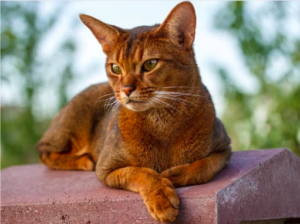
Overview
The Abyssinian is often hailed as one of the smartest cat breeds. Known for their curiosity and playful nature, Abyssinians are quick learners who thrive on mental stimulation.
Training and Activities
Abyssinians are highly trainable and enjoy interactive toys and puzzle feeders. They can learn tricks such as fetching and even walking on a leash. Their love for heights means they appreciate cat trees and climbing structures.
Siamese
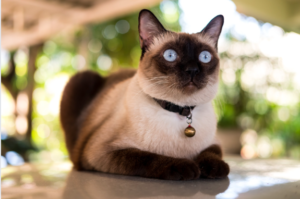
Overview
Siamese cats are not only intelligent but also highly vocal and sociable. They form strong bonds with their owners and are always eager to engage in activities.
Training and Activities
Siamese cats are quick to learn tricks and commands. They enjoy interactive play and can be trained to perform simple tasks like opening doors or retrieving items. Their vocal nature also makes them responsive to verbal cues.
Bengal
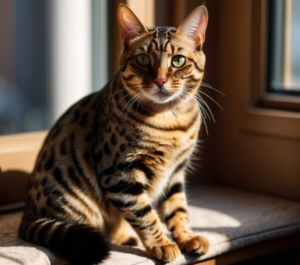
Overview
Bengals are known for their striking appearance and high energy levels. Their intelligence is reflected in their ability to solve problems and learn complex tasks.
Training and Activities
Bengals enjoy activities that challenge their minds, such as agility courses and puzzle toys. They can be trained to walk on a leash and perform tricks. Providing them with interactive playtime helps in channeling their energy positively.
Burmese

Overview
Burmese cats are affectionate, people-oriented, and intelligent. They enjoy being involved in family activities and can be trained to follow various commands.
Training and Activities
Burmese cats are quick learners and respond well to positive reinforcement. They enjoy learning tricks, playing fetch, and interactive games that stimulate their minds.
Scottish Fold

Overview
Scottish Folds are known for their distinctive folded ears and sweet demeanor. Despite their calm appearance, they are intelligent and can learn quickly.
Training and Activities
Scottish Folds enjoy interactive toys and games. They can learn tricks and commands and appreciate routines that keep their minds engaged.
Training Tips for Intelligent Cats
Start Early
Begin training your cat as early as possible. Kittens are more receptive to learning new behaviors and routines.
Use Positive Reinforcement
Reward your cat with treats, praise, or playtime whenever they successfully perform a desired behavior. Positive reinforcement strengthens the association between the action and the reward.
Keep Sessions Short and Fun
Cats have shorter attention spans than dogs, so keep training sessions brief and enjoyable. Incorporate playtime to make learning fun for your cat.
Be Patient and Consistent
Patience and consistency are key when training cats. Repeat commands and routines regularly, and avoid punishing your cat for mistakes. Consistency helps reinforce learning and builds trust.
Challenges of Training Intelligent Cats
Independence and Stubbornness
Intelligent cats can sometimes be independent and stubborn. They might choose to ignore commands if they are not in the mood, so it’s important to understand their behavior and work with it.
Need for Mental Stimulation
Highly intelligent cats require constant mental stimulation. Boredom can lead to behavioral issues, so ensure they have plenty of toys, activities, and interaction to keep their minds engaged.
Managing High Energy Levels
Breeds like Bengals have high energy levels that need to be managed. Providing them with enough physical and mental exercise is crucial to prevent destructive behavior.
Living with Intelligent Cats
Creating an Enriched Environment
An enriched environment is essential for intelligent cats. This includes a variety of toys, climbing structures, scratching posts, and interactive feeders to keep them stimulated.
Social Interaction
Intelligent cats thrive on social interaction. Spend quality time playing, training, and simply bonding with your cat to ensure they feel valued and engaged.
Understanding Their Needs
Each intelligent breed has its own unique needs and preferences. Understanding these and catering to them will help you build a strong and positive relationship with your cat.
Conclusion
Owning an intelligent cat can be an incredibly rewarding experience. These quick learners bring joy, challenge, and companionship to their owners. By understanding their unique characteristics and providing the right environment and training, you can foster a deep and fulfilling relationship with your feline friend.
Whether you choose an Abyssinian, Siamese, Bengal, Burmese, or Scottish Fold, you’re sure to enjoy the remarkable intelligence and personality they bring into your home.
Frequently Asked Questions (FAQs)
What makes a cat breed intelligent?
Intelligent cat breeds often show high levels of problem-solving abilities, adaptability, and social learning. They can quickly learn commands, tricks, and routines.
Can all cats be trained?
While some breeds are more receptive to training than others, all cats can be trained to some extent. Patience, consistency, and positive reinforcement are key to successful training.
What are the best toys for intelligent cats?
Interactive toys, puzzle feeders, and climbing structures are ideal for intelligent cats. These toys provide mental stimulation and keep them engaged.
How do I keep my intelligent cat from getting bored?
Provide a variety of toys, engage in regular playtime, and introduce new activities regularly. Rotating toys and creating an enriched environment also help prevent boredom.
Are intelligent cats more difficult to care for?
Intelligent cats can be more demanding in terms of mental stimulation and interaction. However, with the right approach and environment, they can be delightful companions.
We appreciate you for taking the time to read this article!
Finally, we hope you found this article interesting? And what do you think about ”Clever Cats: Breeds That Learn Fast!?”
Please feel free to share or inform your friends about this article and this site, thanks!
And let us know if you observe something that isn’t quite right.
Cats
The Enchanting Scottish Fold: A Guide to the Adorable Feline with Folded Ears
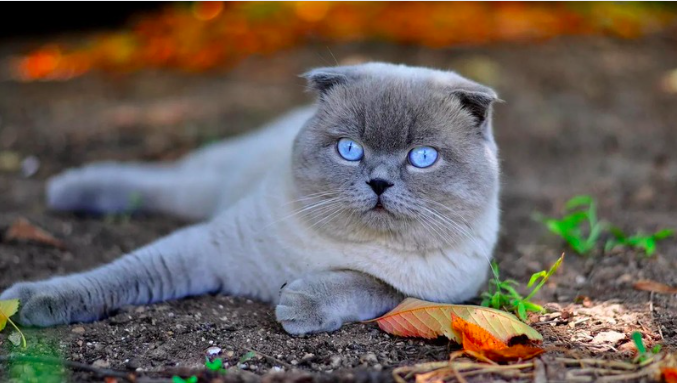
The Enchanting Scottish Fold: A Guide to the Adorable Feline with Folded Ears
Welcome to the world of the Scottish Fold cat, where charm and curiosity meet in an irresistibly adorable package. With their distinctive folded ears and sweet expression, Scottish Folds have captured the hearts of cat lovers around the world. Originally hailing from Scotland, these cats are known for their gentle demeanor, playful nature, and loving personality.
In this comprehensive guide, we will delve into the fascinating world of Scottish Fold cats, exploring their history, physical characteristics, personality traits, and care requirements. Whether you’re a seasoned cat owner or considering adding a feline friend to your family, the Scottish Fold’s unique charm and affectionate nature make them a delightful addition to any home. Join us as we unravel the enchanting tale of the Scottish Fold cat and discover why they are such beloved companions.
Fold
Overview
The Scottish Fold cat is a charming and distinctive breed known for its unique folded ears and sweet expression. Originating from Scotland in the 1960s, these cats have captured the hearts of many with their endearing appearance and affectionate nature. Scottish Folds are known for their gentle and loving temperament, making them wonderful companions for families and individuals alike.
History and Origins
The Scottish Fold breed traces its roots back to a white barn cat named Susie, who was found in Scotland in the early 1960s. Susie had a unique genetic mutation that caused her ears to fold forward, giving her an owl-like appearance. This trait was passed down to her kittens, and thus, the Scottish Fold breed was born. The breed quickly gained popularity for its distinctive look and friendly demeanor, and it was officially recognized by cat registries in the 1970s.
Physical Characteristics
- Folded Ears: The most distinctive feature of the Scottish Fold is its folded ears, which give the cat a sweet and owl-like appearance. Not all Scottish Folds have folded ears; some may have straight ears, known as “straights,” which are also common in the breed.
- Coat and Colors: Scottish Folds can have either a short or long coat, both of which are dense and plush. They come in a variety of colors and patterns, including tabby, tortoiseshell, and solid colors like white, black, and blue.
- Body Structure: Scottish Folds are medium-sized cats with a rounded appearance. They have sturdy bodies, round faces, and large, expressive eyes that give them a sweet and gentle expression.
Personality and Behavior
Scottish Folds are known for their calm and laid-back demeanor. They are affectionate cats that enjoy being around people and are often described as “lap cats” due to their love of cuddling. They are also known for their playful nature and enjoy interactive toys and games. Scottish Folds are generally good with children and other pets, making them a great choice for families.

Health and Care
- Ear Care: Due to their folded ears, Scottish Folds may be prone to ear infections. It’s important to regularly check and clean their ears to prevent issues.
- Grooming: Scottish Folds have dense coats that require regular grooming to prevent matting and tangling. Weekly brushing is usually sufficient to keep their coat in good condition.
- Health Concerns: Scottish Folds are generally healthy, but they may be prone to certain genetic conditions, including a skeletal disorder known as osteochondrodysplasia. Responsible breeding practices can help minimize the risk of these health issues.
Training and Activities
Scottish Folds are intelligent cats that can be trained to perform tricks and commands. They enjoy interactive play and benefit from toys that stimulate their minds and bodies. Providing them with scratching posts and other outlets for their natural behaviors can help keep them happy and healthy.
Compatibility with Families and Other Pets
Scottish Folds are known for their gentle and affectionate nature, making them great companions for families. They are good with children and other pets, including dogs, and can adapt well to different environments. Their loving and sociable nature makes them a popular choice for households looking for a friendly and affectionate pet.
Conclusion
The Scottish Fold cat is a unique and charming breed known for its folded ears and sweet expression. With their gentle demeanor and affectionate nature, Scottish Folds make wonderful companions for families and individuals alike. Whether you’re looking for a lap cat to cuddle with or a playful friend to keep you entertained, the Scottish Fold cat is sure to bring joy and companionship to your home.
FAQs about Scottish Fold Cats
Why do Scottish Folds have folded ears?
Scottish Folds have a genetic mutation that affects the cartilage in their ears, causing them to fold forward. This unique trait gives them their distinctive appearance.
Are Scottish Folds prone to ear problems due to their folded ears?
Yes, Scottish Folds may be more prone to ear infections due to the fold in their ears, which can trap dirt and moisture. Regular cleaning and monitoring of their ears can help prevent issues.
Do Scottish Folds have any health issues associated with their folded ears?
Scottish Folds may be prone to a condition called osteochondrodysplasia, which affects the development of their cartilage and bones. Responsible breeding practices can help reduce the risk of this condition.
Are Scottish Folds good with children and other pets?
Scottish Folds are known for their gentle and friendly nature, making them good companions for families with children and other pets. They enjoy socializing and being part of the family.
Do Scottish Folds require a lot of grooming?
Scottish Folds have dense coats that require regular grooming to prevent matting and tangles. Weekly brushing is recommended to keep their coat in good condition.
We appreciate you for taking the time to read this article!
Finally, we hope you found this article interesting? And what do you think about ”The Enchanting Scottish Fold: A Guide to the Adorable Feline with Folded Ears!?”
Please feel free to share or inform your friends about this article and this site, thanks!
And let us know if you observe something that isn’t quite right.
Cats
The Enchanting Burmese Cat: Affectionate, Playful, and Loyal
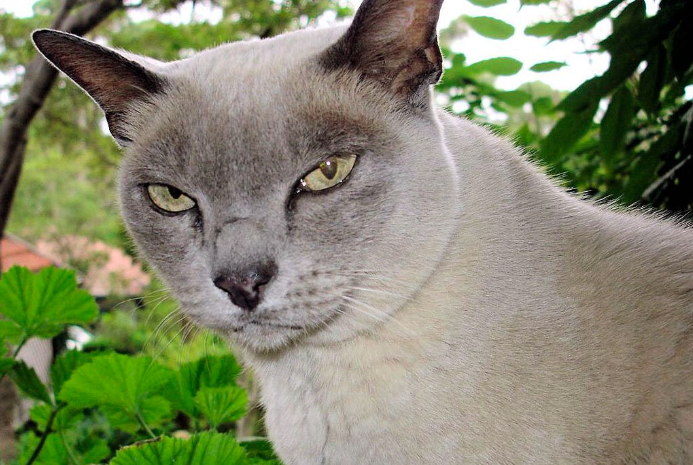
The Enchanting Burmese Cat: Affectionate, Playful, and Loyal
Enter the world of the Burmese cat, where elegance meets affection in a charming feline companion. Originating from the temples of Burma, these cats have captured the hearts of cat lovers worldwide with their striking appearance and loving nature. With their sleek coats, expressive eyes, and playful demeanor, Burmese cats are not just pets; they are cherished members of the family.
In this comprehensive guide, we delve into the captivating world of Burmese cats, exploring their history, physical characteristics, personality traits, and care requirements. Whether you’re a seasoned cat owner or considering adding a feline friend to your family, the Burmese cat’s unique blend of beauty, intelligence, and affection is sure to captivate you. Join us as we unravel the enchanting tale of the Burmese cat and discover why they are such beloved companions.
Burmese
Overview
The Burmese cat is a breed known for its striking appearance and affectionate nature. Originating from Burma (now Myanmar), these cats are renowned for their sleek, muscular bodies, expressive eyes, and silky coats. Burmese cats are often described as “people-oriented,” as they form strong bonds with their human companions and enjoy being part of the family. Their playful and curious nature makes them delightful companions for both children and adults alike.
History and Origins
The history of the Burmese cat can be traced back to ancient Burma, where they were considered sacred and kept by monks in temples. They were later brought to the West in the early 20th century and quickly gained popularity for their striking appearance and affectionate personality. The breed has since become a favorite among cat enthusiasts worldwide, known for its loving and loyal nature.
Physical Characteristics
- Coat and Colors: Burmese cats have short, sleek coats that lie close to the body. They come in a variety of colors, including sable, champagne, blue, and platinum. The coat is soft and silky to the touch, adding to the breed’s overall charm.
- Body Structure: Burmese cats are medium-sized with a muscular build. They have rounded heads, large, expressive eyes, and short, straight noses. Their compact bodies give them a sturdy appearance, and they move with grace and agility.
- Eyes and Ears: Their eyes are one of their most striking features, being large, expressive, and usually a deep, rich color that complements their coat. Their ears are medium-sized, slightly rounded at the tips, and set wide apart on the head.
Personality and Behavior
Burmese cats are known for their affectionate and sociable nature. They are often described as “dog-like” due to their tendency to follow their owners around the house and seek out human companionship. They are also highly intelligent and enjoy interactive play, making them great companions for families with children or other pets.
In addition to their affectionate nature, Burmese cats are also known for their vocalizations. They have a soft, sweet voice that they use to communicate with their owners, often engaging in “conversations” and expressing their needs and desires.
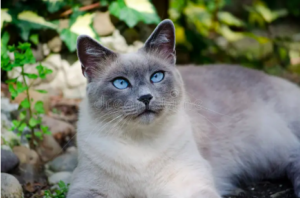
Health and Care
- Grooming: Burmese cats have short coats that require minimal grooming. Weekly brushing is usually sufficient to remove loose hair and keep their coat shiny. They also benefit from regular dental care to prevent oral health issues.
- Diet: A high-quality, balanced diet is essential for maintaining the health and vitality of Burmese cats. They should be fed a diet that is appropriate for their age, size, and activity level to ensure they receive the nutrients they need.
- Health Concerns: Burmese cats are generally healthy, but they can be prone to certain genetic conditions such as hypertrophic cardiomyopathy (HCM) and diabetes. Regular veterinary check-ups and a healthy diet can help manage these risks.
Training and Activities
Burmese cats are intelligent and can be trained to perform various tricks and commands. They enjoy interactive play and thrive on mental stimulation. Providing them with toys, puzzle feeders, and opportunities for play can help keep them entertained and prevent boredom.
Compatibility with Families and Other Pets
Burmese cats are known for their loving and social nature, making them great companions for families. They get along well with children and other pets, including dogs, as long as they are properly introduced. Their affectionate demeanor and playful nature make them a popular choice for households looking for a friendly and engaging pet.
Conclusion
The Burmese cat is a breed beloved for its affectionate nature, striking appearance, and playful personality. Whether you are looking for a loyal companion or a playful friend, the Burmese cat is sure to bring joy and warmth to your home. With their loving nature and sociable demeanor, Burmese cats make wonderful pets for families and individuals alike, enriching their lives with their presence and affection.
FAQs about Burmese Cats
What is the temperament of a Burmese cat like?
Burmese cats are known for their affectionate and social nature. They are often described as “dog-like” due to their loyalty and tendency to follow their owners around the house. They enjoy being involved in family activities and form strong bonds with their human companions.
Are Burmese cats good with children and other pets?
Yes, Burmese cats are generally good with children and other pets. They are playful and enjoy interactive play, making them great companions for families with children. They also get along well with other pets, including dogs, especially if they are introduced properly.
Do Burmese cats require a lot of grooming?
Burmese cats have short, sleek coats that require minimal grooming. Weekly brushing is usually sufficient to remove loose hair and keep their coat shiny. They also benefit from regular dental care to prevent oral health issues.
Are Burmese cats vocal?
Burmese cats are known for their soft, sweet voice, but they are not excessively vocal. They use their voice to communicate with their owners, often engaging in “conversations” and expressing their needs and desires.
What kind of environment is best for a Burmese cat?
Burmese cats thrive in environments where they have plenty of opportunities for play and interaction. They enjoy being part of the family and should have access to toys, scratching posts, and other enrichment activities. They also enjoy having access to outdoor enclosures or safe outdoor spaces where they can explore and indulge their natural instincts.
We appreciate you for taking the time to read this article!
Finally, we hope you found this article interesting? And what do you think about ”The Enchanting Burmese Cat: Affectionate, Playful, and Loyal!?”
Please feel free to share or inform your friends about this article and this site, thanks!
And let us know if you observe something that isn’t quite right.
-

 Pet Care2 years ago
Pet Care2 years agoThe Best Dog Collars For 2022
-

 Dogs2 years ago
Dogs2 years agoBichon Frise: The Happy, Playful, and Cuddly Companion
-

 Trending Pet Stories1 year ago
Trending Pet Stories1 year ago2023 ‘World’s Ugliest Dog’ Winner: Scooter’s Tale of Resilience
-

 Animals3 years ago
Animals3 years agoAre There Animals Having Down Syndrome?
-

 Pets2 years ago
Pets2 years agoThe Fascinating World Of The Red Chameleon
-

 Dogs3 years ago
Dogs3 years agoTop 10 Most Popular Dog Breeds According To AKC.
-

 Dogs3 years ago
Dogs3 years ago21 Dog Breeds That Resemble Bears Or Teddy Bears!
-

 Dogs3 years ago
Dogs3 years agoEskimo Dogs from Canada – What Are They? – Find Out!


